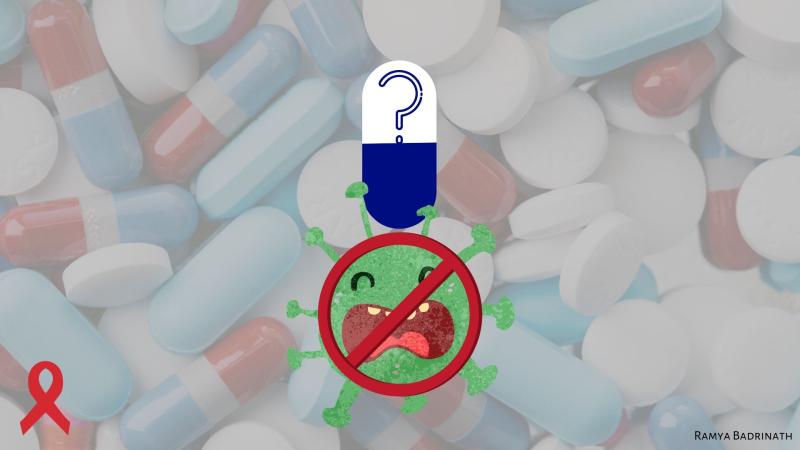
Human Immunodeficiency Virus (HIV) infections are one of the most severe public health problems in India, with approximately 21 lakh HIV infected people reported in 2017. Sex workers, men who have sex with men, transgender people, and people who inject drugs are at a higher risk of contracting the virus. Although many practice safety measures like safe sex and using sterile injection needles, some do contract the infection. It is also very challenging to diagnose those infected with HIV as the virus has a long window period where it attaches to our DNA and secretly multiplies.
Scientists across the world are exploring the possibility of a drug that can be taken daily to keep HIV infections at bay. Such a drug could help in reducing the spread of the disease and an overall prevalence. It can act as a preventive drug to those at a higher risk of contracting the infection. In a recent study, published in the journal Clinical Infectious Disease, researchers evaluate if such a drug can act as a preventive measure in a developing country like India. The study involved researchers from the USA and India. It argues that although such HIV pre-exposure prophylaxis (PrEP) costs more than periodic screening for HIV alone, the additional cost is worth the additional gain, and these drugs can be offered as a choice to people who are at a higher risk of contracting HIV.
The study was based on two high-risk groups—men who had sex with other men and people who injected drugs. It considered seven different strategies directed at reducing the incidence of HIV infection. These include one-time and regular HIV screening and taking anti-HIV drugs like tenofovir disoproxil fumarate/emtricitabine. Those who took the medicines also underwent annual creatinine testing to monitor kidney function for drug-related toxicity. The study also considered cases where there was no preventive measure taken or testing done.
Over 15 years, the researchers evaluated the above strategies to measure clinical outcomes like the risk of infection throughout life, reduction in virus spread, the number of infections prevented, and life-years gained. They also took into account the economic consequences like costs of HIV testing, a daily pill, treatment, and care. The study found that taking a daily pill along with regular HIV testing every 6 months, which costs about US$ 90.36 or INR 6,420 per year, was the best-suited strategy based on its efficacy and cost effectiveness for India. The World Health Organisation recommends a plan that involves daily pills and screening once every three months, costing about US$ 111.12 or INR 7,895 per year. The researchers emphasise the importance of adhering to the regime as the risk associated with the infection continues to grow on missing the pill.
Although no method offers a 100% protection against HIV, practising safe sex, using clean injections and taking a daily pill—all these provide better protection, argue the researchers. These measures, they say, could be life-saving as they can reduce the chances of people getting new HIV infections.
"Scaling up the use of PrEP in areas with the highest HIV incidence can be an excellent strategy as it will prevent more HIV infections," says Dr Pooyan Kazemian. He is a Research Scientist at the Massachusetts General Hospital and the corresponding author of the study.
In a country like India, where 87,000 new HIV infections occur, collective efforts should be taken to direct HIV infections towards a path of absolute eradication. While the number of people infected with HIV has reduced by 60%, the country has to take this number to 75% by 2020, to be AIDS-free by 2030. Identifying high-risk groups and counselling them to involve the proposed strategy at an early stage is still challenging as most of those identified present after a severe illness. Although social stigma has always been one of the hurdles, programs on awareness, and education have helped many to open up about this sensitive issue.
The study shows that using a daily pill and routine HIV testing could reduce the risk of infection among high-risk groups, resulting in gained life-years and cost savings. As a next step, the researchers are working on a regime where instead of a daily pill, the drug can be taken only when needed. This measure will be even more promising as it is equally efficient and incurs only half the cost compared to its daily consumption.
This article has been run past the researchers, whose work is covered, to ensure accuracy.






